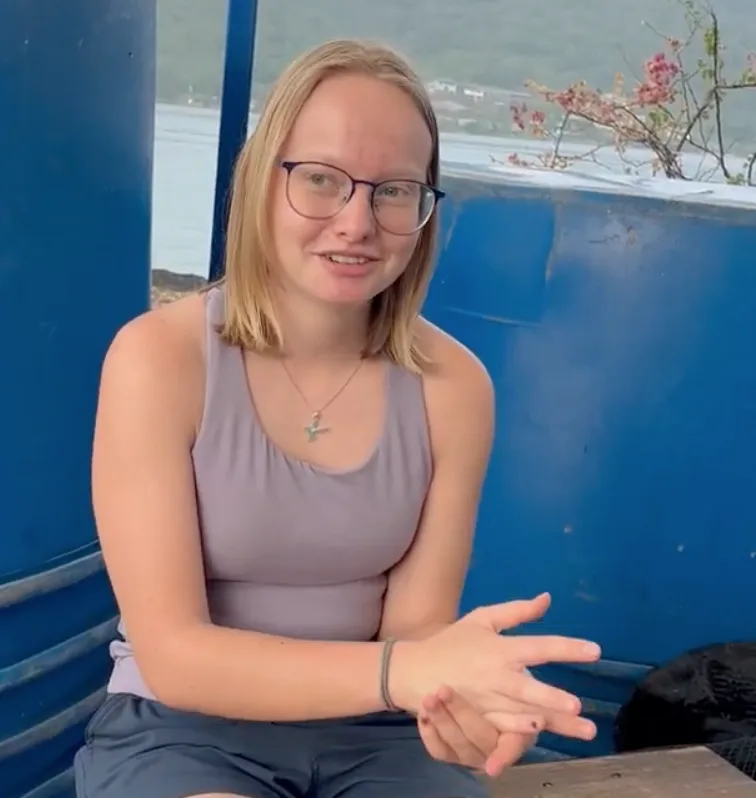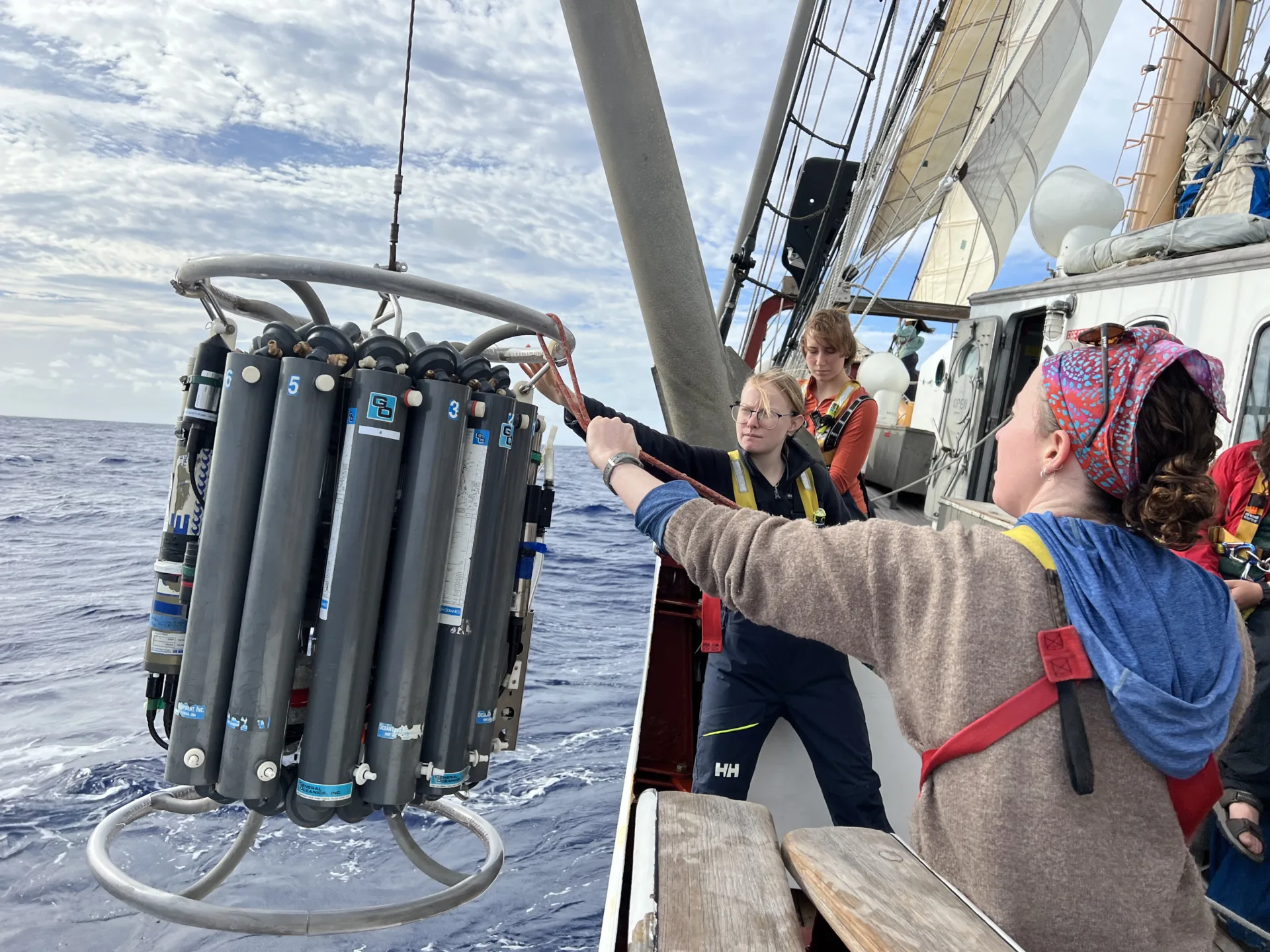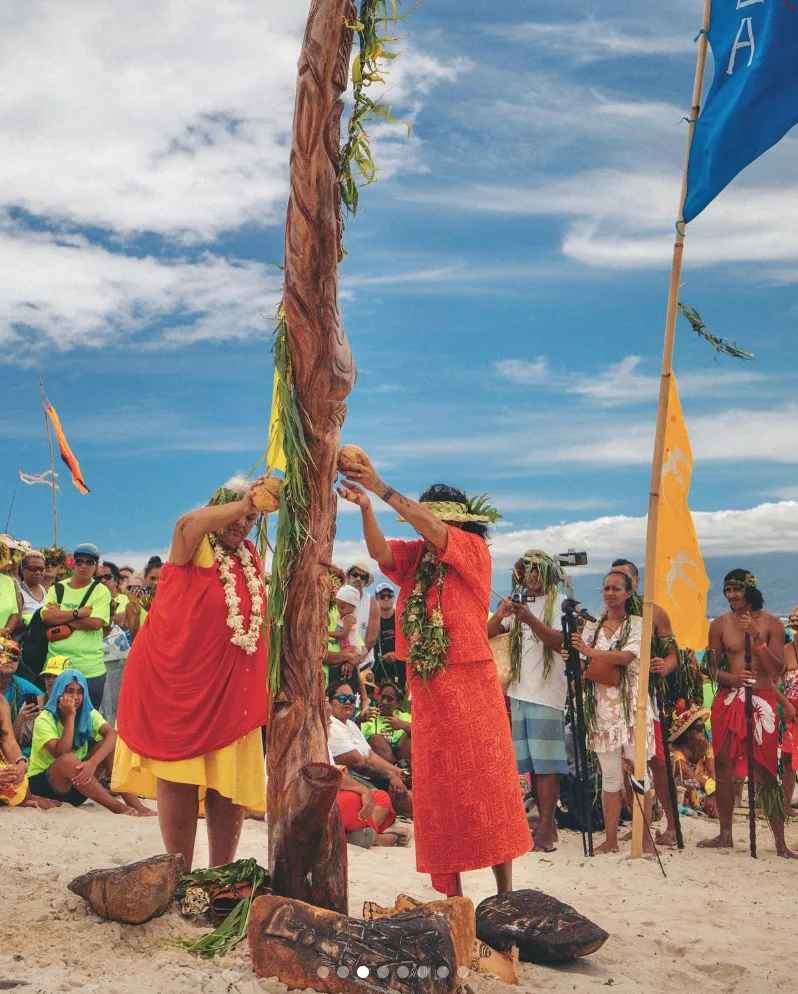Programs Blog
Robin on Data Collection and A Sacred, Public Beach

Date: May 30, 2025
Time: 1900
Location: Gump Marine Station, Mo‘orea
Weather: 78˚ F, 5 kts easterly, partly cloudy
Below is an excerpt of an interview with Robin Muse, Boston University
Was there a moment at sea where you recognized you were getting an education?
Yes, towards the end. When we were in the JWO (Junior Watch Officer) and JLO (Junior Lab Officer) phase—even though it was hard and stressful and I was like I don’t know what I’m doing—there was a moment where we were doing a deployment, a hydrocast. I was “dancing”—guiding the carousel over to the side of the ship then as it is lowered into the water–and I was also JLO, so I was calling out what we were all doing, telling the wire-driver what to do. I remember being nervous. It’s equipment that can be dangerous. What if I don’t know what I’m supposed to call, but I did. It was fine. Sarah (Kington, the chief scientist) was like, “You can do it.” It just made me realize: Wow, I know how to use this crazy science equipment. I can do this. I can call out what is supposed to happen. That me feel like, Wow, I’m doing science. I’m a scientist! I learned how to do this. I know what I’m doing.
Has putting your science project together been different from research you’ve done in the past?
A lot of the science research I’ve done has been super rushed. Within three and half weeks. There’s not a lot of time to go in depth and really spend a lot of time collecting data and research. I think that was a huge thing. There was such a large component that was spent “in the field” collecting data, five weeks out at sea, and just a lot more time spent with it. But this time in Mo’orea has also felt rushed in some ways. We only have two weeks after we get here to finish our paper and put together our presentation. There’s just a lot more that we’ve done then I’ve done in the past.
Will you tell us about our morning snorkeling at Tema’e Beach?
It’s super pretty. Our tour guide Herehia told us that it’s a famous beach that Tahitian people go to Mo’orea to visit and also a sacred beach to the Polynesians. The beach we visited at Tema’e is next to this big resort and the resort wants to build more overwater bungalows and expand on to the public beach area. Because this beach is sacred and because it’s one of the last two public beaches a lot of the local people don’t want that to happen. When we visited yesterday, we walked down and looked at this really cool pole, kind of a tree trunk, that was in the sand. It had carvings on it and it had some leis around the base of it. That was really cool to see. Herehia told us they had a ceremony a couple years ago to protest. They left this up in the sand. I just felt really grateful we got to visit that beach. When we were snorkeling that coral was so pretty, some of the healthier coral that I’ve seen. I saw so many cool fish. I saw two turtles, which was a highlight for me, since they’re one of my favorite animals. I just feel really grateful that we got to go to this sacred place and experience the beauty of it—before it might be gone. Hopefully it won’t be. I feel more passionate, strongly, that it should be protected, maintained as a public beach.


Recent Posts from the Ships
- Ocean Classroom 2024-A collaborative high school program with Proctor Academy
- Collaborations and Long-term Commitments: SEA’s Caribbean Reef Program Sets a Course for Coastal Programs that Compliment Shipboard Experiences.
- Sea Education Association students prepare for life underway using state of the art nautical simulation from Wartsila Corporation.
- SEA Writer 2022, Magazines From the Summer SEA Quest Students
- Technology@SEA: Upgrades Allow Insight into Ocean Depths
Programs
- Gap Year
- Ocean Exploration
- High School
- Science at SEA
- SEA Expedition
- SEAScape
- Pre-College
- Proctor Ocean Classroom
- Protecting the Phoenix Islands
- SPICE
- Stanford@SEA
- Undergraduate
- Climate and Society
- Climate Change and Coastal Resilience
- Coral Reef Conservation
- Marine Biodiversity and Conservation
- MBL
- Ocean Exploration: Plastics
- Ocean Policy: Marine Protected Areas
- Oceans and Climate
- Pacific Reef Expedition
- The Global Ocean: Hawai'i
- The Global Ocean: New Zealand